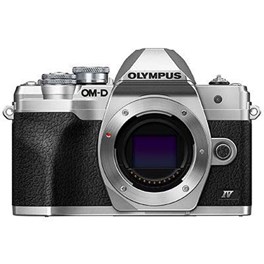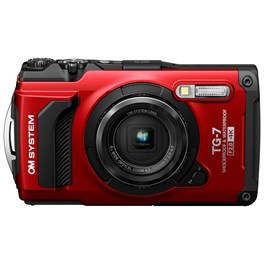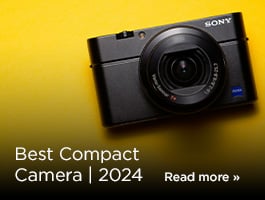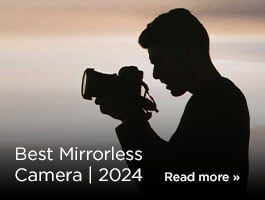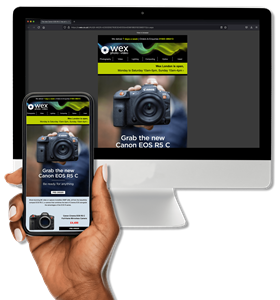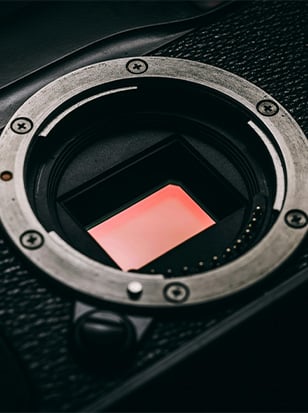
When we talk about the best OM System cameras, we are of course also talking about the best Olympus cameras, as the two things are essentially one and the same. After Olympus sold its imaging division to OM Digital Solutions, the brand was revitalised and reborn as OM System, and has carved out its own niche as a favoured system for photographers and videographers alike.
So, in short, you don’t need to worry about mixing and matching Olympus and OM System cameras and lenses — it all works together. And indeed, you have more options at your disposal, as OM System cameras are part of the Micro Four Thirds system, a standard of sensor size and lens mount that the firm shares with Panasonic. This means that the best Panasonic Lumix G lenses will work with Olympus and OM System cameras just as well as the best OM System lenses. So you’ve got real freedom to build a system of small but mighty cameras and lenses.
We’ve picked all the best options for the system in this guide, including the flagship cameras and more affordable choices for beginners. Lots to get through — let’s get into it.
Best overall OM System camera
|
Pros:
Cons:
|
Sensor: 20MP stacked BSI Live MOS Image Stabilisation: 5-axis in-body, up to 8.5 stops Autofocus: 1053-point Cross Quad Pixel AF with AI subject detection Continuous Shooting: Up to 50fps with continuous autofocus Video: DCI/UHD 4K at 60p 12-bit recording |
This is the top-end flagship of the OM System range. The OM-1 Mark II is a triumph, a speedy and capable camera that delivers superb results for outdoor photographers in all disciplines. Wildlife shooters in particular should strongly consider this capable camera for its fast shooting speeds and impressive autofocus. However, the OM-1 Mark II also has plenty to offer landscape photographers, with its built-in ND and Grad ND filter functions that allow you to modulate the amount of light hitting your sensor — perfect for producing dazzling long exposures. You can even live-preview the effect in the viewfinder,
With highly effective in-body stabilisation and impressive IP53 weatherproofing, the OM System OM-1 Mark II is the camera that’s ready for anything. It has lower raw resolution than rivals from other systems, but this is a sensible step to take when you’re dealing with the smaller Four Thirds sensor. Top-end pros might have wanted a CFexpress card slot rather than just SD, and videographers might have wanted 4K 120p — but in all other respects, this is an incredibly fully featured camera for pros and enthusiasts alike.
Best for beginners
|
Pros:
Cons:
|
Sensor: 20.3MP Live MOS Image Stabilisation: 5-axis in-body Autofocus: 121-point contrast-detection AF Continuous Shooting: Up to 8.7fps Video: 4K UHD at 30p |
This has long been the beginner model in the range — to the point where it still bears the “Olympus” name, having not received an OM System-branded update yet. The Olympus OM-D E-M10 Mark IV is still one of the best beginner cameras you can buy, and is the perfect entry-point to OM System, and indeed to Micro Four Thirds more generally. It’s a lightweight camera that is easy to take everywhere with you, it produces brilliantly punchy images with vivid colours, and its 15fps burst rate means it can keep up with fast subjects.
As mentioned, this model is a few years old, and there are a few aspects that could use an update. The contrast-detection autofocus system is a little dated, and while having USB charging is definitely a bonus, it’d be nice if it were USB-C rather than the old micro USB format.
However, something that’s especially worth noting is the fact that the OM-D E-M10 Mark IV has 5-axis in-body stabilisation. Many similarly priced and specced cameras in other systems don’t, and it’s a tremendous asset for low-light photography, allowing you to use slower shutter speeds than you would otherwise be able to.
Best mid-range
|
Pros:
Cons:
|
Sensor: 20.4MP Live MOS Image Stabilisation: 5-axis sensor-shift, up to 6.5 stops Autofocus: 121-point hybrid AF Continuous Shooting: Up to 10fps with continuous autofocus Video: DCI 4K at 24p and UHD 4K at 30p |
Sitting squarely in the middle of the range, the OM System OM-5 is a quintessential enthusiast’s camera. Offering the same level of excellent weatherproofing as the OM-1 cameras, it’s a rugged machine built for the outdoors, and excels for both landscape and wildlife photography. Its phase-detection autofocus system is reliably capable, and you also get a few clever computational features thrown in. One thing that particularly impressed us is Starry Sky AF, a dedicated mode for astrophotography that makes it possible to capture hand-held images of the night sky.
There are loads of other modes and options in the OM-5; it’s a delight of a camera to explore. Live ND allows you to shoot longer exposures, High-Res Shot creates a high-pixel composite image, and Pro Capture can record frames from before the shutter is fully released, to ensure you never miss the crucial moment. Stabilisation too is hugely effective, providing up to 7.5 stops of effective compensation.
Best for travel
|
Pros:
Cons:
|
Sensor: 20.3MP Live MOS Image Stabilisation: 5-axis in-body Autofocus: 121-point contrast-detection AF Continuous Shooting: Up to 8.7fps Video: 4K UHD at 30p |
Looking for a slimline camera for travel — one that’ll slip into a jacket pocket or a small day bag? The Olympus PEN EP-7 will fit the bill, and it’ll do it while looking stylish as hell to boot. A mirrorless camera, it pairs best with some of the slim pancake lenses that the Micro Four Thirds system has in abundance, and it delivers excellent image quality with impressive speeds. While there’s no viewfinder, the tilting screen provides a sufficient platform to do your composition on, and it flips down to face the front.
While it isn’t weather-sealed to the same extent as the OM cameras, the Pen EP-7 feels premium in the hand. Its aluminium front and rear dials are beautifully crafted, and we particularly like the Picture Control dial, which allows you to quickly flick between the different stylish colour profiles.
Best Waterproof
|
Pros:
Cons:
|
Sensor: 12MP BSI CMOS Lens: 25–100mm equivalent, f2.0–f4.9 Durability: Waterproof to 15m, shockproof from 2.1m, freezeproof to -10°C Macro: Variable Macro System with up to 7x image magnification Video: 4K UHD at 30p |
For holidays, scuba trips, snorkelling, beach adventures and more, the OM System Tough TG-7 is the camera you want by your side. Waterproof down to depths of 15m, and able to take a pounding too, it’s a hardy camera all right. It’s also one of the most fully-featured tough compacts out there, with a 25-100mm equivalent zoom range that gives you real compositional flexibility, as well as a number of shooting modes specifically optimised for underwater work. It’s great for macro, too, capable of shooting at extremely close focusing distances.
If you want to dive even deeper, you can add the OM SYSTEM/Olympus PT-059 underwater casing, which extends the TG-7’s waterproof depths down to a truly impressive 45m and still allows for use of the control dial to alter exposure compensation. It supports external flash units, too — and believe us, at those kinds of depths, you’re going to need them! But even if your aspirations aren’t to explore the mysteries of the oceans, the Tough TG-7 is a brilliant beach and holiday camera.

FAQs
Is OM System the same as Olympus?
Yes, OM System is the new branding for Olympus cameras, following the transfer of the imaging division to OM Digital Solutions. The cameras continue to offer the same high-quality optics, compact designs, and innovative features that Olympus was known for.
Are OM System cameras good for beginners?
Yes, they are a great choice for beginners due to their user-friendly controls, compact size, and powerful in-body image stabilisation. Many models also include advanced automatic shooting modes and guided settings to help new photographers get started.
What makes OM System cameras stand out?
Their biggest strengths are portability, exceptional stabilisation, and weather-sealed designs. These features make them ideal for travel, outdoor, and adventure photography, allowing users to capture high-quality images without heavy gear.
Can OM System cameras be used for professional work?
Absolutely. Many professionals use them for wildlife, documentary, and travel photography due to their fast autofocus, high-speed shooting, and durable build. The extensive lens selection also provides creative flexibility.
Do OM System and Olympus cameras have good battery life?
Battery life varies by model, but many cameras offer efficient power management. Features like USB charging and extended battery grips help maximise shooting time, making them reliable for long days of photography or travel.
How do we decide?
Our in-house photography experts, store staff and partners all work collaboratively to pour over our guides and tips articles. We also consider emerging trends and customer feedback to make sure our guides are always up-to-date and reflective of what people are truly looking for. By curating only the best products, our guides provide trustworthy recommendations, making it easier for customers to make informed choices with confidence.
If you would like more advice on any purchase our contact centre staff are here to help. Alternatively, you can reach us via email or social media. And don't forget. If you were to purchase anything based on our recommendations you'll be covered by our full returns policy

